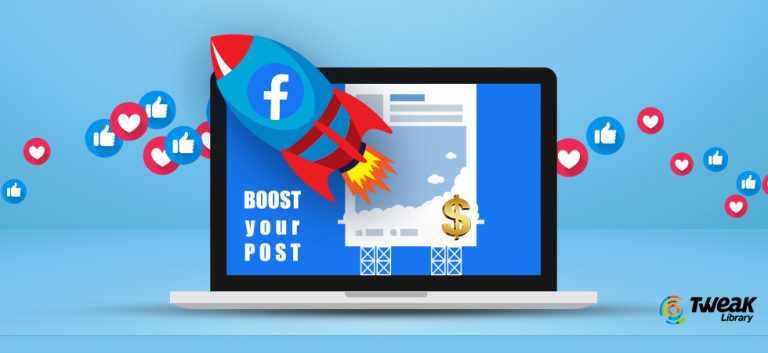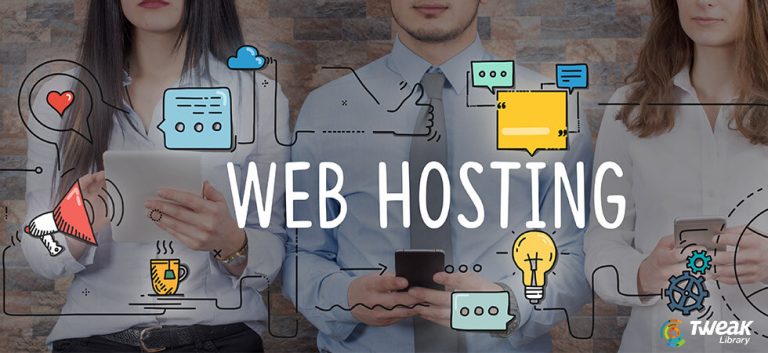The traditional business acumen says, you should connect to your customers at the right place at the right time where they are. Following this marketing tactic, marketers around the world have managed to sell their products & services for years, right?
But, how does this fit into digital marketing space?
Well, your customer is on the Internet today and that’s the right place to connect with them at the right time. Here, digital marketing is the solution you should opt for.
So, what is digital marketing?
Well, if you are marketing products or services using one or another electronic device or on the Internet, you are leveraging the benefits of digital marketing. Here, you can make good use of different digital channels such as search engines, email, social media, websites, and more to connect with your current or prospective customers.
Here, digital marketing could help drive brand awareness and lead generation following different digital channels. During the process, different key performance indicators, or KPIs could help measure outcomes of each digital channel you are leveraging.
Digital marketing is equally beneficial for local businesses or big industries as it gives freedom to connect with the end-user effortlessly where they are (on the Internet).
What is the difference between digital marketing and online marketing?

Well, digital marketing could be divided into two parts i.e. online and offline marketing.
- Offline marketing includes platforms like radio, television, phone, billboards, or similar mediums.
- Online marketing primarily includes marketing through different online mediums that includes search engine optimization, social media marketing, content marketing, paid ads, email marketing, and more.
What is the difference between digital marketing and inbound marketing?

On the surface, a lot of similarities can be found between both, as both the mediums are online, and both give great emphasis on creating digital content for people to consume.
In this context, inbound marketing is a process followed by marketers to use online content to attract target audiences/customers onto their websites. Here, marketers try to provide useful content that is helpful to solve customer’s queries and fulfill their needs. You can consider inbound marketing as a methodology that is used to attract, engage, and delight customers using different digital marketing assets.
While inbound marketers try to attract customers to their websites, outbound marketers try to send marketing messages to as many people as possible no matter whether they are relevant or welcomed.
On the other hand, digital marketing could be used as an umbrella term for all online marketing tactics no matter whether they are inbound or outbound.
What is the difference between digital marketing and Internet marketing?

As discussed, digital marketing could be separated into two major parts i.e. online marketing and offline marketing. Both consists of various tactics. Internet marketing solely relies on marketing products & services using Internet. Here, your sole idea is to attract, engage, and delight your customers by reaching them through Internet on their device.
Digital Marketing Components
As we have discussed digital marketing, it’s time to know about the key components of digital marketing. Digital marketing can be broadly categorized into two categories i.e. online marketing and offline marketing, that we have already discussed.
As we move further, we will cover key elements of digital marketing vis-à-vis online marketing.
Key Elements of Online Marketing
- Search Engine Optimization (SEO)
- Social Media Marketing (SMM)
- Search Engine Marketing (SEM)
- Content Marketing
- Pay-Per-Click (PPC)
- Email Marketing
- Affiliate Marketing
Search Engine Optimization (SEO)

We can elaborate “SEO as a process to optimize online content for search engines. All this is done to get better visibility on search engine results pages (SERPs). Here, you may target specific keywords or bunch of keywords to rank.”
Let’s take this post as an example, here, this post can rank for multiple keywords like “what is digital marketing”, broad term “digital marketing”, “digital marketing components”, “digital marketing examples” “online marketing” and similar terms.
SEO could be divided into three important parts including on-page SEO, off-page SEO, and technical SEO. In addition to that, black hat and white hat SEO techniques are followed by different marketers. While white hat SEO techniques are highly recommended, black hat techniques may cause serious damage to your site reputation in the long-term.
We have discussed more about SEO in this beginner’s guide to SEO.
Social Media Marketing (SMM)

Social media marketing or SMM could be described as a process to connect & communicate with people in social context on different digital platforms. It is done to create brand awareness, lead generation, and attract end-user in real-time.
While the majority of people are on social media platforms, it becomes necessary for businesses to contact their users on these platforms. Social media marketing (SMM) not only helps increase brand awareness, but it also boosts website traffic and generate more sales for you. Here, you need to post right content on the right platform at the right time to attract more users.
We have discussed more about social media marketing in this beginner’s guide to SMM.
Search Engine Marketing (SEM)

Search engine marketing or SEM is the term used for paid advertising on SERPs. Here, your ads are displayed above organic results so that you get better visibility. Here, SEM provides you instant solutions to get more end-users for your product & services, though it is expensive in comparison to SEO.
The primary benefits of using search engine marketing are that you can use it to reach targeted audience, it delivers quick results, better for testing, accurate results tracking, and more.
We have discussed search engine marketing (SEM) in detail in this beginner’s guide to SEM.
Content Marketing

When you are generating brand awareness through content, it is content marketing.
Pretty simple, right?
Well, ahead of this quick definition, content marketing should be elaborated in two major parts.
- Content Strategy
- Content Marketing
Here, content strategy helps find answers to what, how, why, and when about content creation. Moreover, it also helps manage, update, and archive content when needed.
When it comes to content marketing, it simply focuses on tactics and execution of content strategy. Here, you need to create & curate content, edit it, and market it with all available means. You may find written content to educate, update, or entertain. You may also find different content types including blog posts, audio, video, podcasts, Infographics, and more. There are numerous benefits of content marketing as it helps add brand value, it is also cost-effective technique, it helps build relationship with user, it brings traffic & business, and more.
We have discussed more about content marketing in this beginner’s guide to content marketing.
Pay-Per-Click (PPC)

PPC or Pay-Per-Click is a smart module of Internet marketing, where you need to pay only when user clicks on your ad. Thus, you get a chance to enhance brand awareness while paying only for clicks from end-users.
Here, you need to design and run PPC campaigns for targeted keywords for better visibility on search engine results pages (SERPs). Under PPC, your ads may display before 10 organic results or after them depending on your quality score and multiple other factors. Google Ads (formerly known as Google AdWords) is one of the most popular PPC advertising systems on the Internet that gives you the option to bid right for your selected keywords.
Pay-Per-Click is discussed more in this quick PPC guide from WordStream.
Email Marketing

Email marketing could be used to generate website traffic, leads, subscriptions, or anything else that is good for your business. You can elaborate email marketing as a practice of sending a bunch of emails with different types of content to a list of subscribers.
It is important to remember that subscribers you have chosen to send email have personally opted-in to receive an email from you. It should also have some value for them. To create an effective email marketing campaign a few things you should remember includes:
- Personalize the email content
- Use responsive designs
- Interactive call-to-action, and more.
HubSpot has well-described email marketing in this guide.
Affiliate Marketing

Affiliate marketing is simply selling others products to earn quick commission. Here, you put your marketing efforts to help sell products of others on your blog, website, social media platform, or on other medium.
It includes four important parties including the merchant, the network, the publisher, and the customer. While two important parties’ seller and the affiliate marketer makes it possible to create & sell product other parties are also important to complete the process.
Neil Patel has well-discussed affiliate marketing in his blog.
How to create a digital marketing strategy?
Now that we know digital marketing plays a crucial role to help build your brand today. Let’s discuss how to create a digital marketing strategy that should deliver results.
Work on buyer persona
According to HubSpot, “A buyer persona is a semi-fictional representation of your ideal customer”.
Here, you perform market research and gather real-data to create this buyer persona for your business. To build buyer persona important elements you should consider includes:
- Customer’s demographics
- Goals, motivations, and behavior patterns.
Here, you should perform detailed study to get better results.
Identify your goals
Now that you have defined buyer persona for your business, you should also consider identifying your marketing goals. For example, you want to increase sales by 10% this year, then you may need to increase leads by 30 to 40% to help achieve that goal.
Identify existing marketing assets you have
Next is to evaluate your existing digital channels and assets you own. It will help streamline your efforts and get effective results. Here, you need to identify:
- Owned media that your company or brand already owns like website, social media profiles, etc.
- Earned media includes your brand mentions on third-party sites through PR, guest posts, reviews, etc.
- Paid media that includes paid ads.
Audit
In the next step, you will need to audit all your owned, earned, and paid media campaigns to get a clear picture of where you stand and how to go ahead. Here, you need to determine which media is working fine and which ones you should include in your digital marketing campaign.
Create well-informed digital marketing plan
Now that you know everything about your buyer persona, you have set goals, identified existing marketing assets, and audited them, it’s time to draw a well-informed digital marketing plan. To do this, you can use the best marketing tools to run different campaigns successfully.
Conclusion
Now that you know what digital marketing is and how important it is today to bring business, it’s time you should create a well-informed digital marketing strategy to get more business.
The pro advice is you shouldn’t solely rely on one digital marketing platform to avoid drawbacks it may cause, instead you should follow the omnichannel approach for great success in digital marketing.
If you are a digital marketing company owner or even planning to run Google digital marketing campaign at a basic level, this guide could be of great use for you.
Remember, investing in digital marketing strategy today can help you grow business tomorrow.






Leave a Reply